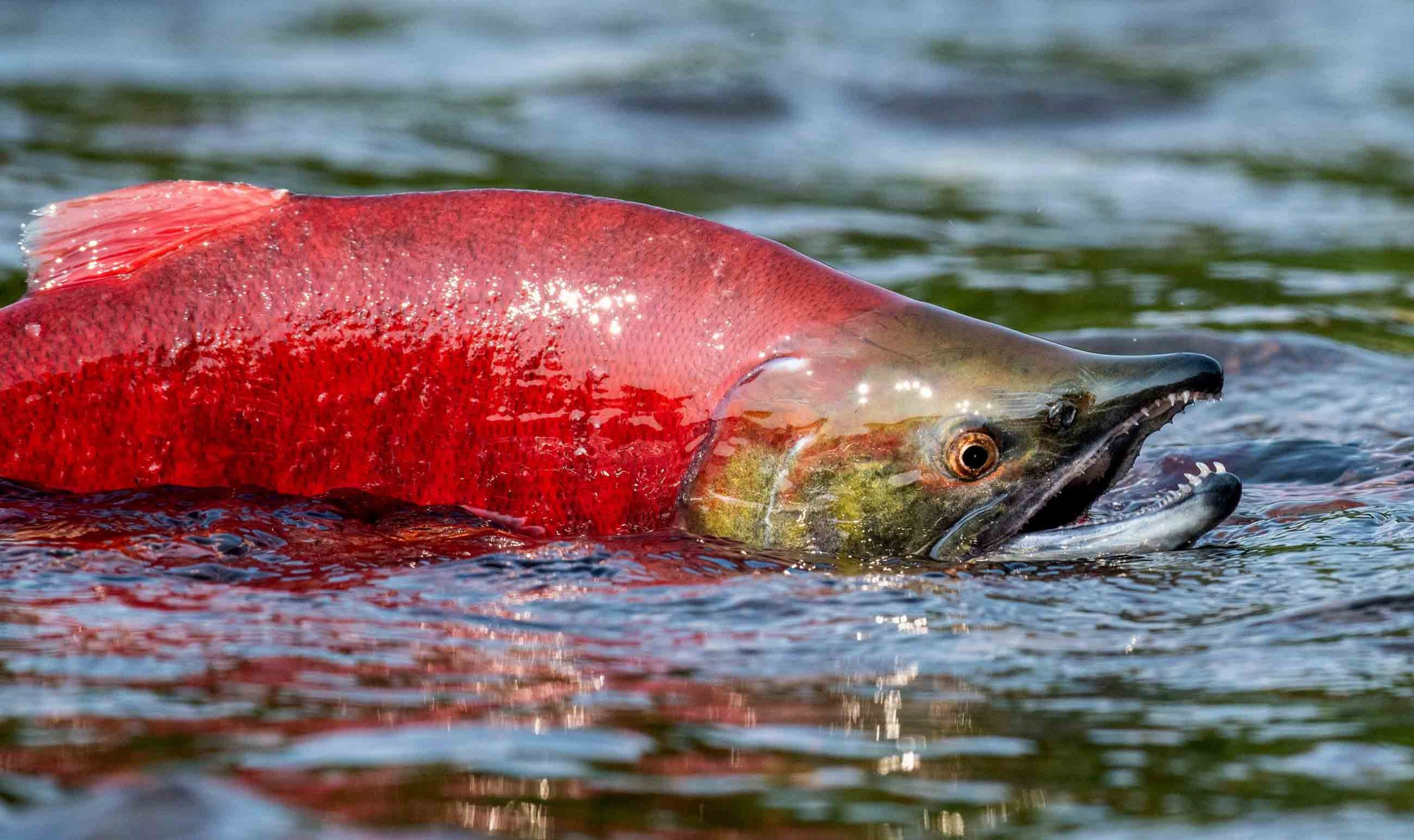Gitanyow Lax’yip, August 20, 2024: Pacific salmon are under threat due to climate change, habitat degradation and other pressures. In British Columbia, some endangered and at-risk populations have dropped dramatically and could be at risk of disappearing completely. Hatcheries, which incubate, rear and release Pacific salmon to live alongside their wild counterparts, are a key component in supporting and restoring these vulnerable populations.
Today, the Minister of Fisheries, Oceans, and the Canadian Coast Guard, the Honourable Diane Lebouthillier, announced the Government’s intention to construct a new community-run hatchery on the Kitwanga River, a tributary of the Skeena River. The hatchery will be built by the Government of Canada and operated by Gitanyow Nation. Construction on the facility is expected to begin this fall.
The proposed hatchery will primarily raise Kitwanga sockeye salmon, a stock of significant conservation concern with deep cultural importance to the Gitanyow people and other First Nations who have relied on it for thousands of years. This facility builds on the Gitanyow Nation’s feasibility work, which includes detailed studies and analyses to ensure the project’s viability, and salmon recovery planning, and supports shared goals for salmon conservation and fisheries management within their traditional territory. Additionally, it underscores the importance of preserving the genetic diversity of the Kitwanga run, particularly in light of biodiversity threats from climate change and cumulative impacts of development. Protecting as much genetic diversity as possible is crucial for the long-term resilience of these salmon populations.
For the Gitanyow Nation, this hatchery symbolizes the continuation of a decades-long effort to rebuild the once-thriving Kitwanga sockeye salmon stock, which was among the top ten producers of wild sockeye salmon in the Skeena Watershed. Historically, returns were in the
10,000s annually, sustaining the Gitanyow, other First Nations in the Skeena, and the commercial fishery for over a century.
This proposed hatchery is made possible with funding through DFO’s Pacific Salmon Strategy Initiative (PSSI), a transformative investment towards the protection and restoration of Pacific salmon and their habitats. Under PSSI, DFO has embarked on a multi-year initiative to modernize its hatcheries, shift towards conservation and targeted supports for specific at-risk Pacific salmon stocks, and more fully integrate scientific expertise in salmon enhancement. Targeted Community Economic Development Program (CEDP) investments are an important component under PSSI that will provide critical infrastructure and operational capacity to support salmonid enhancement and conservation objectives.
Partnerships with Indigenous communities, who have a deep connection with salmon and have been significantly impacted by their decline, are integral to our efforts to regenerate Pacific salmon stocks for the benefit of all Canadians. With this new hatchery, DFO and Gitanyow Nation are working together to address historic salmon declines and improve access to the fish that are the lifeblood of Indigenous peoples in the region.
Quotes
Simogyet Malii/Glen Williams, President of the Gitanyow Hereditary Chiefs Office
“These latest investments by the Federal government to help the Gitanyow recover Kitwanga sockeye represent a high point in our efforts to preserve and rebuild a stock that has been the life blood of our people since time immemorial. We voluntarily stopped fishing them over fifty years ago because of conservation concerns, and we hope these new measures to establish a state-of-the-art, modern day, conservation-based hatchery will once again allow us to see strong and healthy sockeye salmon returns to our river.”
The Honourable Diane Lebouthillier, Minister of Fisheries, Oceans and the Canadian Coast Guard
“This new hatchery shows how Canada and First Nations are working together, through the Pacific Salmon Strategy Initiative, to conserve and restore vulnerable Pacific salmon populations. Through partnership and collaboration with Indigenous Peoples, governments, stakeholders, and communities with a deep connection to salmon, we can ensure that these fish are safeguarded for our children and grandchildren.”
Quick Facts
– DFO’s Salmonid Enhancement Program (SEP) is an integrated hatchery, stewardship and habitat restoration program.
– Each year, SEP produces more than 300 million juvenile salmon for harvest, stock assessment, rebuilding, conservation, and stewardship and educational purposes. The program annually engages with over 10,000 volunteers, undertakes upwards of 50 restoration projects, supports 250 plus volunteer-led projects and 17 Community Economic Development Program (CEDP) and First Nations hatcheries, 80 smaller-scale community enhancement efforts (Public Involvement Program (PIP), and supplies school education and awareness programs.
– SEP also restores habitat in rivers, streams and wetlands, and supports citizen and First Nation involvement in salmon enhancement and watershed stewardship.
– SEP enables community-based hatcheries and salmon enhancement facilities across British Columbia through the CEDP and PIP.
– CEDP hatcheries are operated under contribution agreements by local First Nations and community-based societies, with ongoing operational and management support from DFO’s SEP Community Involvement Program (CIP).
Associated Links
Gitanyow Hereditary Chiefs
Salmonid Enhancement Program
About hatcheries and spawning channels
Pacific Salmon Strategy Initiative
State of the Canadian Pacific Salmon Report
###
